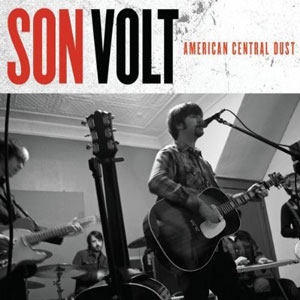Iron & Wine Around the Well Sub Pop
- Performance:

- Sound:

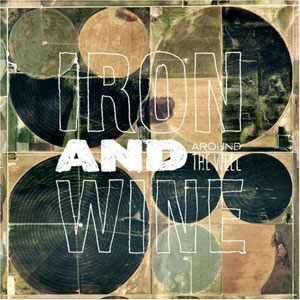 I came to the Iron and Wine game late. I bought 2007’s “The Shepherd’s Dog,” amongst the disapproving howls of his audience who seemed to think he’d abandoned his sound. You’d have thought he’d started rapping or something. “Around the Well” is a collection of B-sides and rarities that span the length of his career, and I can kind of see his fans’ point in retrospect. I think the instrumentation through them a curve. His earlier work was more stripped down and sparse. But underneath it all, you still have Sam Beam’s whisper-melodies, and lyrical images whether he’s working with a band or by himself. The guy has his own sound. You never have to wonder if you’re hearing Iron and Wine. You know right away if you’re familiar with his style. It’s a good one, and “Around the Well” is a fine sampler to begin with if you haven’t already.
I came to the Iron and Wine game late. I bought 2007’s “The Shepherd’s Dog,” amongst the disapproving howls of his audience who seemed to think he’d abandoned his sound. You’d have thought he’d started rapping or something. “Around the Well” is a collection of B-sides and rarities that span the length of his career, and I can kind of see his fans’ point in retrospect. I think the instrumentation through them a curve. His earlier work was more stripped down and sparse. But underneath it all, you still have Sam Beam’s whisper-melodies, and lyrical images whether he’s working with a band or by himself. The guy has his own sound. You never have to wonder if you’re hearing Iron and Wine. You know right away if you’re familiar with his style. It’s a good one, and “Around the Well” is a fine sampler to begin with if you haven’t already.
There are no detailed liner notes included with this collection so I had to cheat a little bit to gather some info. According to the band’s website, the first half of “Around the Well” is comprised of home recordings and the second half was recorded in proper studios with producers and engineers. I’m a huge fan of minimalist production, and Beam’s home demos are extraordinary. He’s able to create textures and sounds without trickery or contrivance. His arsenal includes, but is not limited to, alternate tunings, slide guitar, banjoes, and vocal harmonies. The sound is consistent, but never tiresome. This is saying a lot because this is not party music. These songs go better with a quiet dinner than wild debauchery. The studio recordings are mellow too, enough so that a drum kit seems almost shocking when it finally appears on “Belated Promise Ring.” Things never get “rocking” in the Led Zeppelin sense of the word, but they do get somewhat heavy in a way. Beam mixes the sacred and the profane lyrically, and the expanded instrumentation (beginning with “No Moon”) livens things up for the latter part of the set.
I, for once, can’t decide which style I prefer, but I’m not going to spend a lot of time trying either. I’m happy to have found a new artist whose work I can anticipate with excitement and whose past catalogue awaits my discovery. Iron and Wine records for Sub Pop so it’s all available on vinyl even if the packaging and presentation is a little lacking. This is actually a two and one-half record set (side two of the third disc has an etching of the artwork on it), and it’s housed in a single sleeve that’s going to fall completely apart sooner than later. There’s a coupon for a digital download of the set (which I’ve come to expect if a CD isn’t included), as well as a lyric sheet so it’s not a complete wash by any stretch. The vinyl is clean with no scuffs which is key because I’m going to get a lot of mileage out of this one. I suspect I’ll have the whole Iron and Wine catalogue before the next official release sees daylight. I’ll let that fact stand as my recommendation to you. Enjoy.
Various ArtistsComo Now: The Voices of Panola Co., MississippiDaptone Records
- Performance:

- Sound:

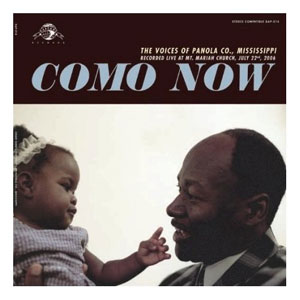 I love traditional Gospel music, and old-time Negro spirituals. But you have to be careful. As with any other genre of music, Gospel can get diluted and sabotaged by slick recording practices and goofy instrumentation. You don’t have to worry about such things while you listen to “Como Now.” There aren’t any instruments other than the singers’ voices, and the record was released on Daptone Records so you know it’ll sound right. These folks make records that sound like they were recorded in the ’60’s and ’70’s when records sounded like they were made in a room rather than a lab. Except for “Como Now.” It sounds like it was recorded in the ’40’s or ’50’s in the field. It’s powerful music, and good for your soul. It’ll sound foreign to contemporary ears, but I challenge anyone to find more authentic music in any genre that has been made in this decade.
I love traditional Gospel music, and old-time Negro spirituals. But you have to be careful. As with any other genre of music, Gospel can get diluted and sabotaged by slick recording practices and goofy instrumentation. You don’t have to worry about such things while you listen to “Como Now.” There aren’t any instruments other than the singers’ voices, and the record was released on Daptone Records so you know it’ll sound right. These folks make records that sound like they were recorded in the ’60’s and ’70’s when records sounded like they were made in a room rather than a lab. Except for “Como Now.” It sounds like it was recorded in the ’40’s or ’50’s in the field. It’s powerful music, and good for your soul. It’ll sound foreign to contemporary ears, but I challenge anyone to find more authentic music in any genre that has been made in this decade.
You can’t discuss field recordings or roots music seriously without mentioning Alan Lomax. He and his assistant recorded Mississippi Fred McDowell (buy everything by him you can find) in Como, Mississippi decades ago. Those recordings must have taken place in close proximity to the “Como Now” sessions as I don’t believe Como is exactly a metropolis. “Como Now” was recorded at Mt. Mariah Church on July 22, 2006, but these recordings maintain the integrity and feeling of Lomax’s original discoveries. The depth of feeling and the emotion involved are startling and can move you to tears. It’s fascinating to know that people still worship and express themselves this way. Even Gospel legends like the Dixie Hummingbirds have moved on to more modern sounds, having recorded with the likes of Levon Helm and Larry Campbell. There’s nothing modern on “Como Now” excepting the record cover’s barcode.
All of these songs sound vaguely familiar if you are at all acquainted with the genre. The subject matter doesn’t change, just the song titles. These are songs about God, or Jesus, or both. Many of them have been previously recorded under different names. Some are reminiscent of Lomax’s Georgia Sea Island Singers recordings. A version of at least one selection on “Como” can also be found on the Rev. Charlie Jackson’s recently re-issued “God’s Got It” (minus the guitars and drums, of course). I don’t focus on the individual songs or artists per se. I view the entire album as one work. I don’t even focus on the subject matter so much as the feeling in back of the message. I just can’t find this depth of emotion in modern music anywhere. No exceptions. It’s true.
If you hear “Como Now,” and you find it agreeable, I can recommend some other titles that are bound to move you too. The previously mention Sea Island Singers are a no-brainer as is the Belleville A Cappella Choir, and the Silver Leaf Quartet. All of these artists can be found in the Alan Lomax Southern Journey series on Rounder. Unfortunately, these have not been released on vinyl to the best of my knowledge. (If you know different, PLEASE let me know.) A box set of the entire series would be the crown jewel in a Gospel vinyl collection if it were available. Until then, pick up “Como Now” now, and always check in with the folks at Daptone for future Gospel releases. The liner notes on “Como” promise there will be some if there haven’t been already. Let’s hope they keep their word.
Steve Earle Townes New West Records
- Performance:

- Sound:

Â
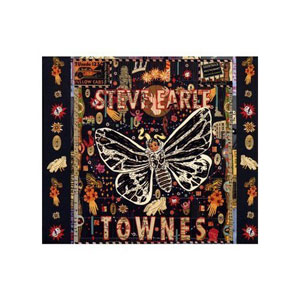 I’ve not listened to much Townes Van Zandt. That’s going to surprise a lot of my friends. I’ve heard some. I know he was a genius, and I’ve been looking forward to exploring his catalog for a long time. My dad used to blare “Pancho & Lefty” which he enjoyed with a little whiskey from time to time. It was the Willie Nelson and Merle Haggard version from the early ’80’s. I know James McMurtry’s live version of “Rex’s Blues.” Ironically, I’m familiar with Van Zandt’s version of the Rolling Stones’s “Dead Flowers,” but I haven’t listened to a whole lot else by him unless it’s been late night at a friend’s house or something. I’ve always intended to really sit down and absorb some of his records, but this tribute record by Van Zant’s former protege has been my real introduction to his actual songs.
I’ve not listened to much Townes Van Zandt. That’s going to surprise a lot of my friends. I’ve heard some. I know he was a genius, and I’ve been looking forward to exploring his catalog for a long time. My dad used to blare “Pancho & Lefty” which he enjoyed with a little whiskey from time to time. It was the Willie Nelson and Merle Haggard version from the early ’80’s. I know James McMurtry’s live version of “Rex’s Blues.” Ironically, I’m familiar with Van Zandt’s version of the Rolling Stones’s “Dead Flowers,” but I haven’t listened to a whole lot else by him unless it’s been late night at a friend’s house or something. I’ve always intended to really sit down and absorb some of his records, but this tribute record by Van Zant’s former protege has been my real introduction to his actual songs.
You only have to know a little about Steve Earle to know that he’s a die hard Van Zant fan, and the liner notes to Earle’s “Townes” bares this out. He claims to have been in a Van Zant “cult, in every sense of the word” during the 70’s. He’s being dramatic, I think, but he was fast friends with his hero, and he’s threatened in the past to jump on Bob Dylan’s coffee table in his boots to tell him that Townes Van Zant was the better songwriter. He knocked one out of the park if he was trying to make a killer album to honor his old friend. I suspect he was.
He starts the 15 song set off with his acoustic reading of “Pancho and Lefty.” It’s a man and his guitar and I think my dad’s going to enjoy this one more than the previously mentioned version. It’s simpler, and more direct, and I like to think it fits my old man’s lifestyle a little better now. All of these songs are every bit as well written and intriguing as you would imagine if you’ve ever heard the smallest bit about Van Zant, and Steve Earle is on his Steve Earle game throughout. (I can’t even finish the review without gushing about it, but I’m trying.) He employs what sound like programmed beats on “Lung,” which is reminiscent of Earle’s own “Copperhead Road” in some ways. He slurs, and drones, and picks. He duets with his son who he named Justin Townes. He plays Irish (“Loretta”), and Appalachia (“Rake”), and Blues (“Brand New Companion”), and Bluegrass (“White Freightliner Blues”). It all sounds just like Steve Earle playing crazy great songs by an insanely talented songwriter. And that’s exactly what it is.
“Townes” is going to kick off a Van Zant binge for me, I can tell. I suspect I’ll go out and find the records that have the most of these songs on them first. I know a lot of his catalog has been re-released on vinyl recently too. Meanwhile, I’ll pour over the lyrics that are re-printed inside this gatefold and take notes as needed. And I might be as crazy as Steve Earle, but Bob Dylan might think about buying some furniture polish soon…
Patterson Hood Mudering Oscar (and other love songs) Ruth Street Records
- Performance:

- Sound:

Â
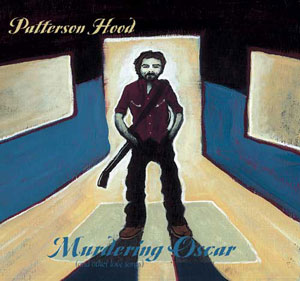 I’d been hearing about Patterson Hood’s forthcoming solo album, “Murdering Oscar,” for so long I was wondering if it was a myth. It’s finally seen the light of day and it is a rock ‘n roll album of mythic proportions, indeed. Hood’s first solo album was a do-it-yourself affair that he recorded at his kitchen table. For some reason, I was expecting something similar from “Oscar,” but that was due to my lack of research and my limited imagination. Luckily, Patterson Hood doesn’t suffer from the same afflictions I do. His imagination and his powers of observation are as alive and vibrant as ever, and they’re both on full display here.
I’d been hearing about Patterson Hood’s forthcoming solo album, “Murdering Oscar,” for so long I was wondering if it was a myth. It’s finally seen the light of day and it is a rock ‘n roll album of mythic proportions, indeed. Hood’s first solo album was a do-it-yourself affair that he recorded at his kitchen table. For some reason, I was expecting something similar from “Oscar,” but that was due to my lack of research and my limited imagination. Luckily, Patterson Hood doesn’t suffer from the same afflictions I do. His imagination and his powers of observation are as alive and vibrant as ever, and they’re both on full display here.
The first two songs on “Murdering Oscar” sound like a leaner (not meaner) version of Patterson’s full-time band, the Drive-By Truckers, which is actually the case.  Sub a couple of new players for one less Trucker on each track & you’ve got a DBT sound w/some new wrinkles. “Pollyanna,” especially, has some smoother, sweeter harmonies & some pretty piano parts which lend a slight “pop” element to the sound. It works better here than on similar songs in the Truckers’ catalogue in my opinion. “Pride of the Yankees” is a little more of a departure from the Truckers sound, but there’s nothing here to alienate Hood’s audience. Strong, simple melodies seem to come as naturally as storytelling to Hood now. He’s added some finesse to his game, and the jab he’s developed makes his trusty right hook that much more powerful.
One of my favorite tracks on “Oscar” is actually specific to the vinyl release. It’s called “Sam’s In The Ground,” and it comes complete with death images, a raunchier-than-usual pedal steel sound (courtesy of John Neff), and a smoking cross-dresser named Bob. There are a couple of neat “insider” moments on the record too such as appearances by Hood’s legendary dad on bass, and a Todd Rundgren cover with some truly great vocal harmonies from Centro-matic’s Will Johnson. “Heavy and Hanging” is another stand-out track about the death of Kurt Cobain with a molasses-slow delivery and distorted vocals that may or may not have been run through a guitar amp.
“Murdering Oscar (and other love songs)” is a fine record from a man that’s been making consistently great records for some time now. There’s no filler here and even the bonus tracks can hold their own against Hood’s previous work. We are very fortunate to have this independent release on vinyl, and no corners were cut with regards to that either. We have two heavy records in a gatefold package with a CD of the whole act (minus bonus tracks). We’ve got liner notes and a song-by-song write-up describing the inspirations and sessions that spawned the work, and I even got a digital download with an a’cappella version of the Rundgren tune because I had the good sense to pre-order the record. Patterson Hood and the Srewtopians will be touring in support of this gem and I would advise you catch them if you can. I can’t imagine we’ll have too many opportunities to see these songs performed by this band live. These guys keep busy, after all, and they’ve all got their own bands to push too.
Shuggie Otis Freedom Flight Epic Records
- Performance:

- Sound:

Â
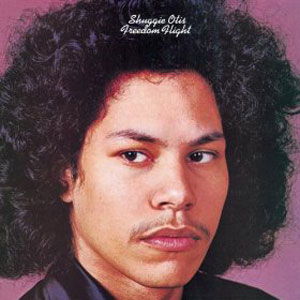 There was a time when it must have seemed like Shuggie Otis was on the verge of taking over the world. At least that’s how I imagine it. I wasn’t alive yet as “Freedom Flight” was originally released in 1971. It was actually Otis’s second solo album, and he was around 18 years young during the sessions. The guy was a guitar prodigy that would later turn down a position as Keith Richards’s foil in the Rolling Stones. That’s right. He declined an invitation to join the World’s Greatest Rock ‘n Roll Band. He had his own thing to do. That was the reason that he supposedly gave. I actually picked up Otis’s “Inspiration Information” a few months back which is widely regarded as a masterpiece that was too far ahead of its time to be appreciated upon its release in 1974. I assumed “Freedom Flight” would be of a similar caliber. I was mistaken.
There was a time when it must have seemed like Shuggie Otis was on the verge of taking over the world. At least that’s how I imagine it. I wasn’t alive yet as “Freedom Flight” was originally released in 1971. It was actually Otis’s second solo album, and he was around 18 years young during the sessions. The guy was a guitar prodigy that would later turn down a position as Keith Richards’s foil in the Rolling Stones. That’s right. He declined an invitation to join the World’s Greatest Rock ‘n Roll Band. He had his own thing to do. That was the reason that he supposedly gave. I actually picked up Otis’s “Inspiration Information” a few months back which is widely regarded as a masterpiece that was too far ahead of its time to be appreciated upon its release in 1974. I assumed “Freedom Flight” would be of a similar caliber. I was mistaken.
“Strawberry Letter 23” is the stand-out track on “Freedom Flight.” It’s a bona fide Soul classic and I don’t think anyone’s going to be foolish enough to debate that with me. The Brothers Johnson had a number one hit with it in 1977, but their version is watered down and weak compared to Shuggie’s. (That part may be debatable. It depends on whether or not you like your funk cut or uncut. I like mine uncut.) Unfortunately, the rest of “Freedom” doesn’t stand up as well as “Strawberry Letter.” It has its moments, but it’s the sound of an artist in development more so than an artist that has arrived.
“Ice Cold Daydream” is the lead track and it’s fun if not inspiring. The music sounds like it’s from the soundtrack to a Fat Albert cartoon or something similar. “Sweet Thang” is a killer instrumental showcasing Otis on slide guitar. (The kid wasn’t offered a spot onstage with Mick Jagger because he couldn’t play, after all.) “Someone’s Always Singing” is a well-arranged piece with some soothing textures and more signature guitar work, but for every success on “Freedom” there is a corresponding misfire. Otis attempts a strained, shouting vocal delivery on “Me and My Woman,” and it comes off as being forced and contrived. The title track is a long, rambling instrumental featuring a wandering tenor sax and Otis’s noodling guitar lines. Some folks might describe this as relaxing or mellow. Unfortunately, words like “boring” and “pointless” pop into my mind. It reminds me of a Grateful Dead “space jam.” There’s clearly a market for it, but not in my living room.Â
Ultimately, “Freedom Flight” isn’t going to overtly offend or scare most listeners. I can’t help but compare it to “Inspiration Information,” and the winner there is clear. Otis had three more years under his belt when he made the latter record, and he assumed the reins on even more of the instrumentation. Commercial success seemed sure to follow, but it was never to be. Otis drifted into obscurity, and this is generally seen as a result of his being hard to work with. More recently, David Byrne re-released “Inspiration Information” on his Luaka Bop label with four songs from “Freedom Flight” as bonus tracks. It’s out of print on vinyl, but can still be found online, and I would recommend this version rather than buying both albums individually. But that’s just me. I have limited space to accommodate records that I don’t listen to. Unfortunately, “Freedom Flight” falls into that category. I’ll be too busy studying “Inspiration Information” anyway.


